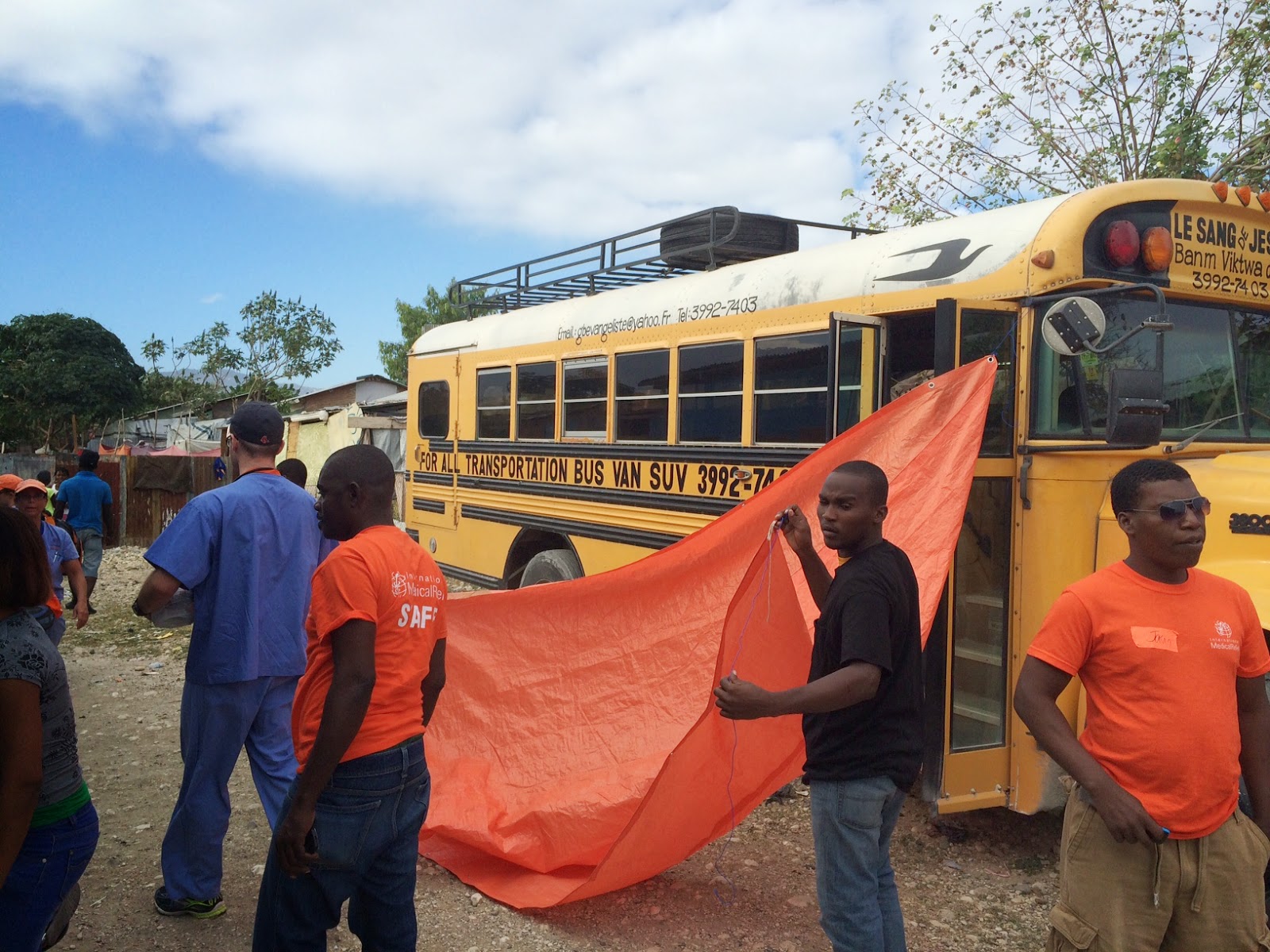When we got off the bus and saw the location, you could tell we were thinking, “Okay, now what?”. But within minutes Dr. Amanda and our team leader Linnea had a plan for the flow of patients and it was time to scramble to find benches, tables and chairs to make it work.
Our little team dramatically improved upon the day before and had already figured out improved ways to do things. We understood the routine, the amount of patients we would be seeing and the space needed to be efficient and provide quality care at the same time. Cases like possible TB and malaria were also no longer a novelty. We also had the mask situation under control – and each section was warned to “mask up” when a possible case was entering their station.
When we arrived we were told Chikungunya was going to be one of the most common cases that we would be seeing. It’s something passed on from mosquito bites and has infected 250,000 people in the last seven months in the area. We had seen multiple cases on day 1 and the same on day 2, many of the people suffering from the pain in the joints that lasts after the disease has been treated.
“We can give them something for the pain in their joints but that’s about all we can do. The body will eventually heal itself,” said nurse Amy.
Severe dermatitis was also something we were seeing. Today a young woman came in with her legs covered in dark bumps. While they looked bad, they were curable just with better hygiene. “If they don’t exfoliate enough, the dirt can build up and cause the problem,” said Dr. Amanda, while testing the bumps by scraping off a bit of one to make sure it was only dirt/skin.
Severe dermatitis was also something we were seeing. Today a young woman came in with her legs covered in dark bumps. While they looked bad, they were curable just with better hygiene. “If they don’t exfoliate enough, the dirt can build up and cause the problem,” said Dr. Amanda, while testing the bumps by scraping off a bit of one to make sure it was only dirt/skin.
She said you see this in the U.S. on people who can’t bend over and scrub their legs. After exfoliating her legs and showing the girl how to do it herself, she was on her way.
Young mothers and young babies seem to dominate our clinic, and nurse Amy’s most memorable patient of the day was one of them. A tiny newborn was brought in dressed in 6 layers of clothes. The poor thing was wheezing. After undressing the little girl and letting her cool off a bit, she started looking a little better and we could finally examine her to see if the wheezing was heat related or something else.
There are times during the day when you are seeing patient after patient that you wonder if what you are doing is helpful. But then you get a case where you know you may have just saved a life. This is what happened when a 10-year-old boy came in with malaria. His mother had no idea what was wrong with him. She said he slept all day and was tired all the time.
There are times during the day when you are seeing patient after patient that you wonder if what you are doing is helpful. But then you get a case where you know you may have just saved a life. This is what happened when a 10-year-old boy came in with malaria. His mother had no idea what was wrong with him. She said he slept all day and was tired all the time.
“You knew something was wrong with him by looking at him. He looked sick,” said nurse Jodie. “We tested for malaria and it came back positive.”
We let the mother know and referred her to the hospital. “I hate that we don’t have medicine to treat it here, but at least we could diagnose it and let her know so she could get help,” Jodie said. “It’s times like this when you know what you are doing is worthwhile.”
Related posts:
Haiti Day 1: Start of Medical Mission Trip
Haiti Day 2: Transforming a school to a medical clinic
Haiti Day 3: Venturing out to help in rural areas
Haiti Day 4: Sweating it out on New Year's Eve on a Mission Trip
Haiti Day 5: Final day of the International Medical Relief mission
Haiti: The boy with the foot
We let the mother know and referred her to the hospital. “I hate that we don’t have medicine to treat it here, but at least we could diagnose it and let her know so she could get help,” Jodie said. “It’s times like this when you know what you are doing is worthwhile.”
Related posts:
Haiti Day 1: Start of Medical Mission Trip
Haiti Day 2: Transforming a school to a medical clinic
Haiti Day 3: Venturing out to help in rural areas
Haiti Day 4: Sweating it out on New Year's Eve on a Mission Trip
Haiti Day 5: Final day of the International Medical Relief mission
Haiti: The boy with the foot







No comments:
Post a Comment